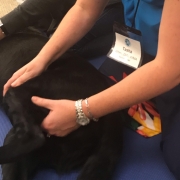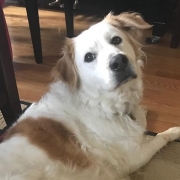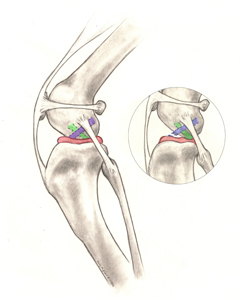Acupuncture in Clinical Practice: A Therapeutic Option Worth Considering
By: Tasha Wilson, DVM, Certified in Medical Veterinary Acupuncture and Rehabilitation
As a veterinarian certified in medical veterinary acupuncture and rehabilitation, I’ve had the privilege of integrating these modalities into the care of patients with complex or chronic conditions. While acupuncture was once viewed as unconventional in Western practice, its benefits are now well supported by scientific research — particularly in pain management, neurologic recovery, and systemic disease modulation.
For medical professionals seeking safe, complementary options to enhance patient outcomes, acupuncture offers a well-founded and clinically relevant tool. Acupuncture stimulates peripheral nerves, especially A-delta and C fibers, which activate central nervous system pathways involved in pain modulation and homeostasis. This stimulation leads to the release of endogenous opioids and serotonin, down-regulation of pro-inflammatory cytokines, and balancing of autonomic nervous system tone. Locally, acupuncture improves circulation, reduces muscle tension, and supports tissue repair — making it highly valuable for patients with musculoskeletal or neurologic dysfunction.
At Acupetvet, acupuncture is most often used to treat orthopedic pain, post-operative recovery, and neurologic conditions such as intervertebral disc disease. It is also used to support patients with chronic systemic illness or undergoing cancer treatment — helping with symptom management and improving quality of life. When combined with rehabilitation therapy, acupuncture enhances neuromuscular retraining and functional recovery. Patients tolerate it very well, including feline patients.
Case Spotlight: Feline Hindlimb Lameness Managed with Acupuncture and Integrative Rehab
Patient: Vivian, 15-year-old spayed female DSH
Presenting Concern: LH lameness, suspected CCL tear ± meniscal injury
Additional Findings: Lumbar arthritis on radiographs, history of chronic URIs (stable), anxiety with handling
Vivian initially presented to her primary vet with a new-onset LH lameness after jumping from a bed. Radiographs revealed lumbar spondylosis and a noticeable click was present during primary vet’s ROM examination. She had been started on Solensia and a higher dose of gabapentin but developed ataxia due to side effects. Once tapered to 25 mg BID, her mobility improved without sedation. Onsior was trialed short-term but discontinued.
Due to her temperament and stress level (sweet but nervous cat) in the clinic, evaluation was limited—she stayed in her carrier during treatment but Dr Wilson was able to assess muscle tone and stifle with palpation. Muscle palpation revealed bilateral triceps and quadriceps tension (RH > LH) and a palpable trigger point in the right lumbar epaxials, likely compensatory. No joint effusion was detected.
Initial Treatment Plan:
- Laser Therapy: Epaxials, bilateral stifles and hips
- Acupuncture: BL 12, 13, 21, 23, 25, Baihui (LU and ST36 added in later sessions) targeting lower back discomfort, trigger points, stifle disease and respiratory signs.
- Initial Home Exercise Program: Modified therapeutic exercises including low-paws-up and broomstick step overs with treat motivation; instructed owner to provide video feedback for remote adjustment
Owner reported gradual but consistent improvements: by week 3, Vivian was navigating stairs, jumping with assistance (using ottomans), and re-engaging in play. She resumed grooming behaviors and exhibited more natural hindlimb extension during bathing—positive indicators of improved comfort and mobility. Her sneezing also decreased.
By late June, the owner reported no visible lameness (confirmed via video), increased spontaneous activity, and return of pre-injury behaviors (playing, stretching, and exploring). Gabapentin was tapered to once daily and discontinued shortly thereafter.
Outcome:
Vivian’s formal rehab was discontinued after 6 sessions. She transitioned to monthly acupuncture for maintenance and has continued to do well with no recurrence of lameness or compensatory issues. One year post-initial presentation, she remains playful, mobile, and off daily medications.
Key Takeaways:
- Acupuncture can provide measurable benefit in feline orthopedic cases, especially when conventional pharmacologic options are limited by side effects or age-related risks.
- Owner engagement, paired with low-stress handling and remote video updates, was critical to success.
- Even nervous or stoic cats are a good candidate for rehabilitation therapy and show clear improvement when treatment is tailored to their comfort level.
As medicine continues to embrace integrative care, collaboration between conventional and complementary therapies becomes increasingly important. I welcome conversations with fellow professionals interested in learning more about how acupuncture may benefit their patients — whether as a referral option or as part of a broader treatment plan. Reach out to us about how we can hep your pet or patient! https://acupetvet.net/contact/




